
All you need to know about the Russian Civil War

In March 1917, the monarchy was toppled in Russia and a republican form of government was established. This, however, only exacerbated the accumulated social, political and economic problems of a country weakened by its participation in World War I.
In November of the same year, Russia lived through a second revolution when the Bolsheviks came to power. A significant part of the population, however, did not share the views of the fanatical champions of socialism. Therefore, the beginning of the Civil War in the country is commonly associated with November 7, 1917 - the day of the Bolshevik coup in the then capital of the Russian state, Petrograd (St. Petersburg).
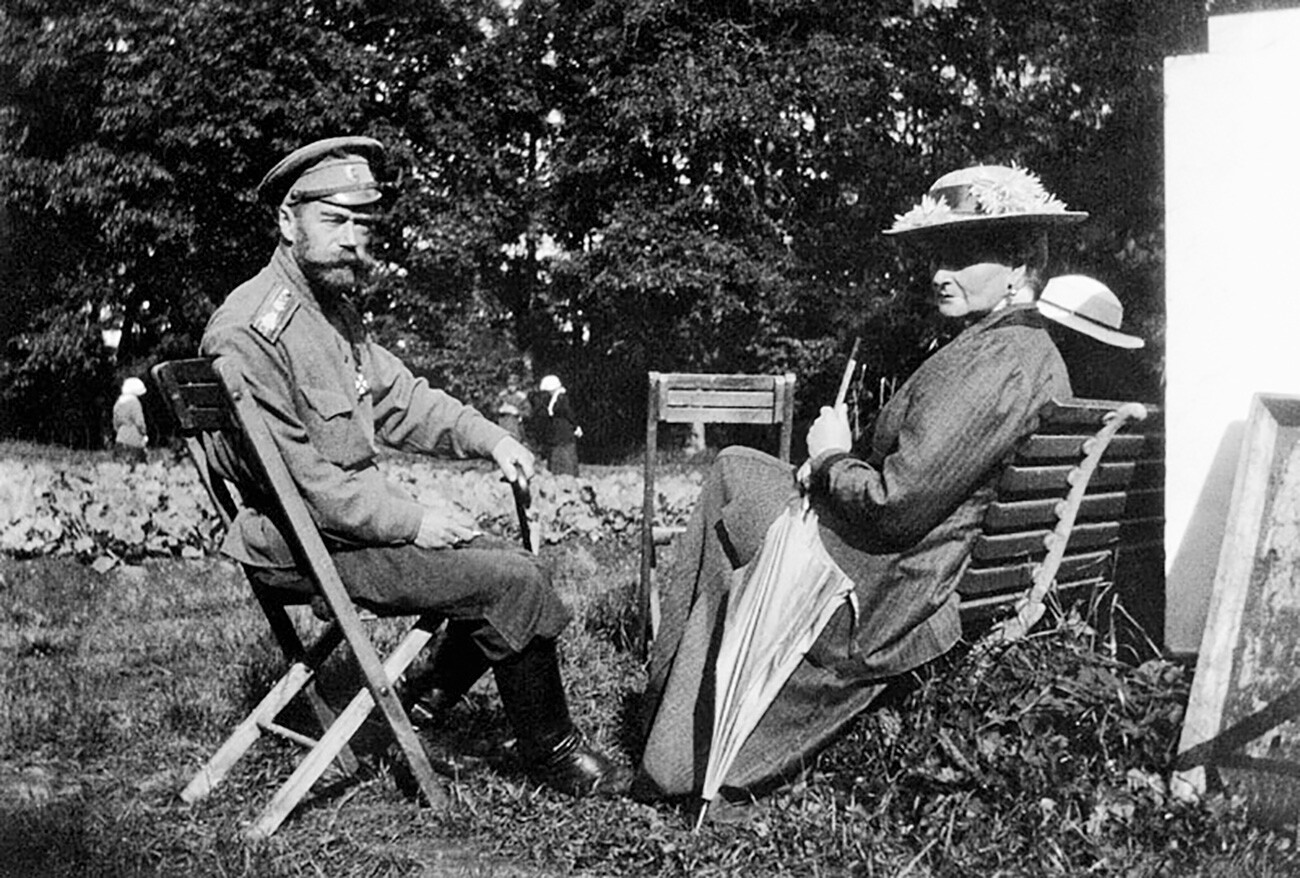 Nicholas II and his wife Alexandra Feodorovna.
Nicholas II and his wife Alexandra Feodorovna.
In an effort to pull Russia out of World War I as rapidly as possible, Lenin’s government signed a peace treaty with the Germans in Brest-Litovsk on March 3, 1918. Under its harsh terms, the country lost all of Poland, Ukraine and the Baltic Region. The so-called “obscene peace” came as a shock to Russian society and noticeably increased the number of fierce opponents of Soviet power, who were determined not to surrender even an inch of their land to the enemy.
And so it was that, from the Summer of 1918, Civil War began to rapidly escalate throughout the vast territory of Russia. Apart from the Bolsheviks and their immediate political opponents, numerous anarchist elements, insurgent armies and “independent states” that had emerged on the fringes of the war-ravaged empire, as well as Western powers, which had decided to make the most of the turmoil in Russia, were drawn into it.
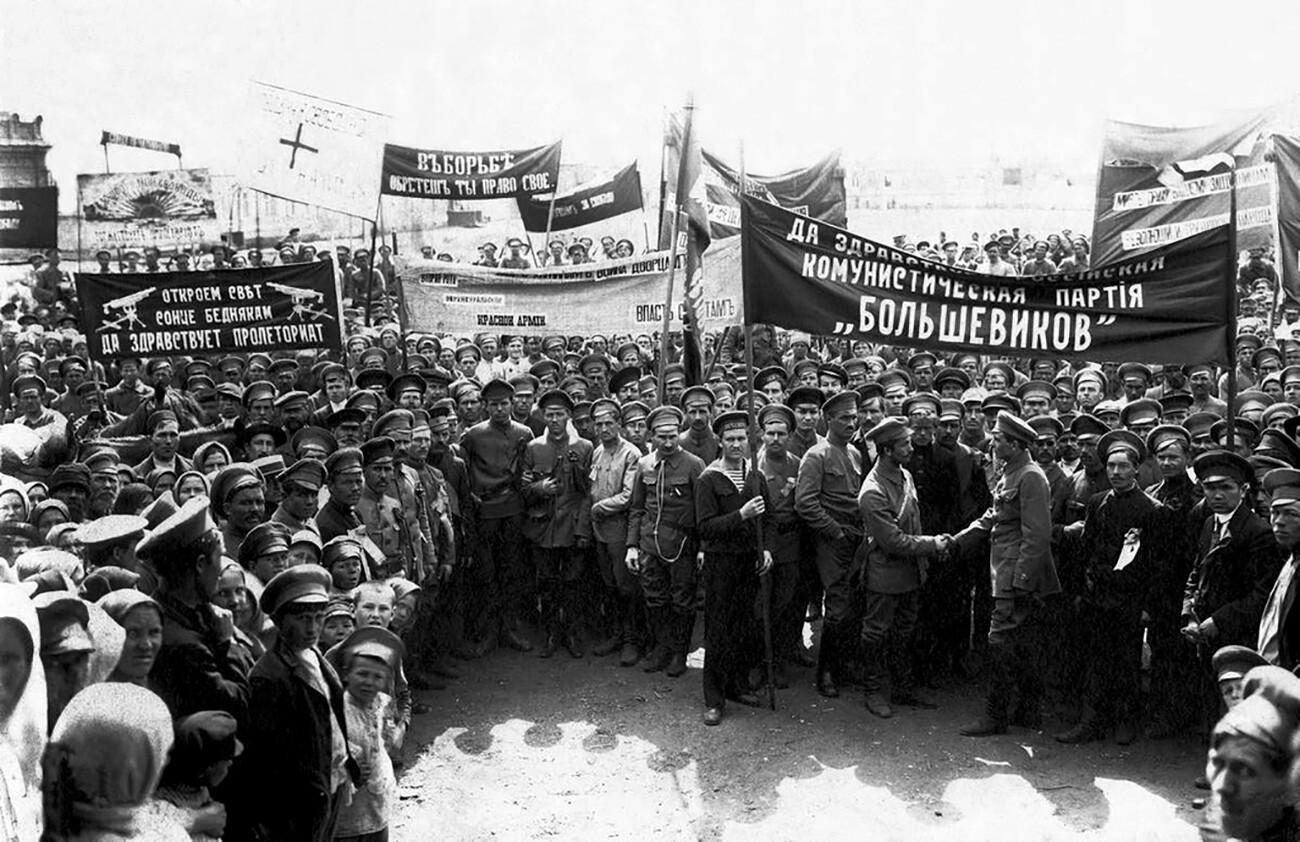 International Workers' Day demonstration.
International Workers' Day demonstration.
The conflict reached its culmination in 1919, with major battles being fought at the approaches to Moscow and Petrograd. And the end of the bloody conflict is associated with the establishment of Soviet power in the Far East in 1922.
As a result, socialism won a decisive victory in Russia and this had enormous implications for the entire history of the 20th century.
In this article, you will learn who fought in the war and what their goals were, who the Reds, Whites and Greens were, what role the interventionists played and why the Bolsheviks ultimately emerged victorious from this fierce conflict.
Who were the Reds?
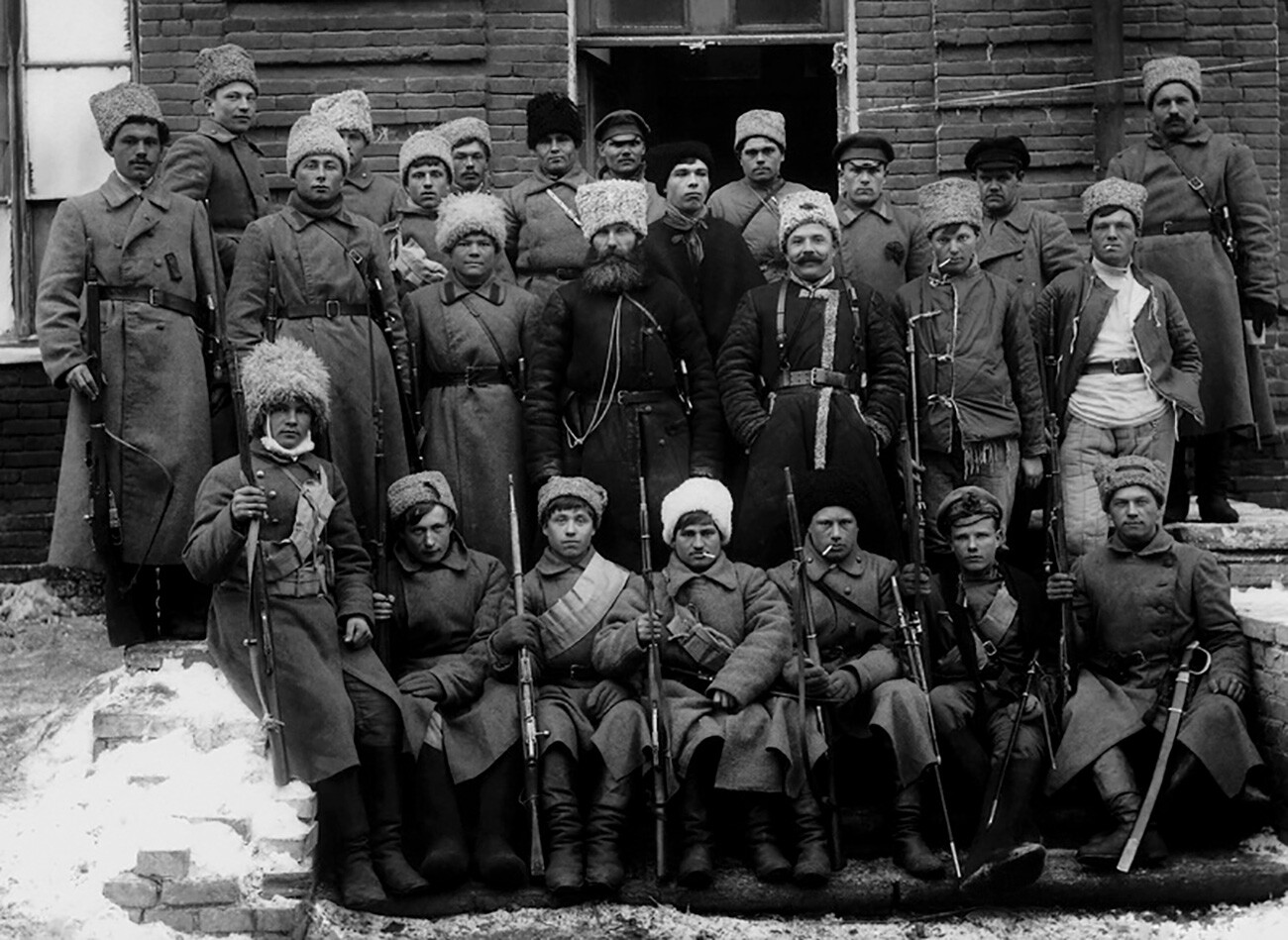 Soldiers of the Red unit.
Soldiers of the Red unit.
Supporters of Vladimir Lenin and the Bolshevik Party were members of the so-called ‘Red’ camp. This vivid color - the color of blood - became the symbol of revolutionary struggle, the left-wing movement, socialism and communism.
Initially, the volunteer detachments of the Red Guards were the armed backbone of the new government. The Workers’ and Peasants’ Red Army was established at the end of January 1918. Despite its name, it didn’t consist entirely of workers and peasants, but included representatives of different classes of Russian society, who shared the same revolutionary ideals.
Thus, quite a large number of tsarist officers enlisted in the Red Army, in which they were referred to as “military specialists”. The first Supreme Commander-in-Chief of the Armed Forces of Soviet Russia was Jukums Vācietis, a former colonel in the imperial army.
The numerous partisan detachments operating behind enemy lines significantly bolstered the Bolsheviks in the war. They were either established by local party bodies or were set up spontaneously at the initiative of the population.
Who were the Whites?
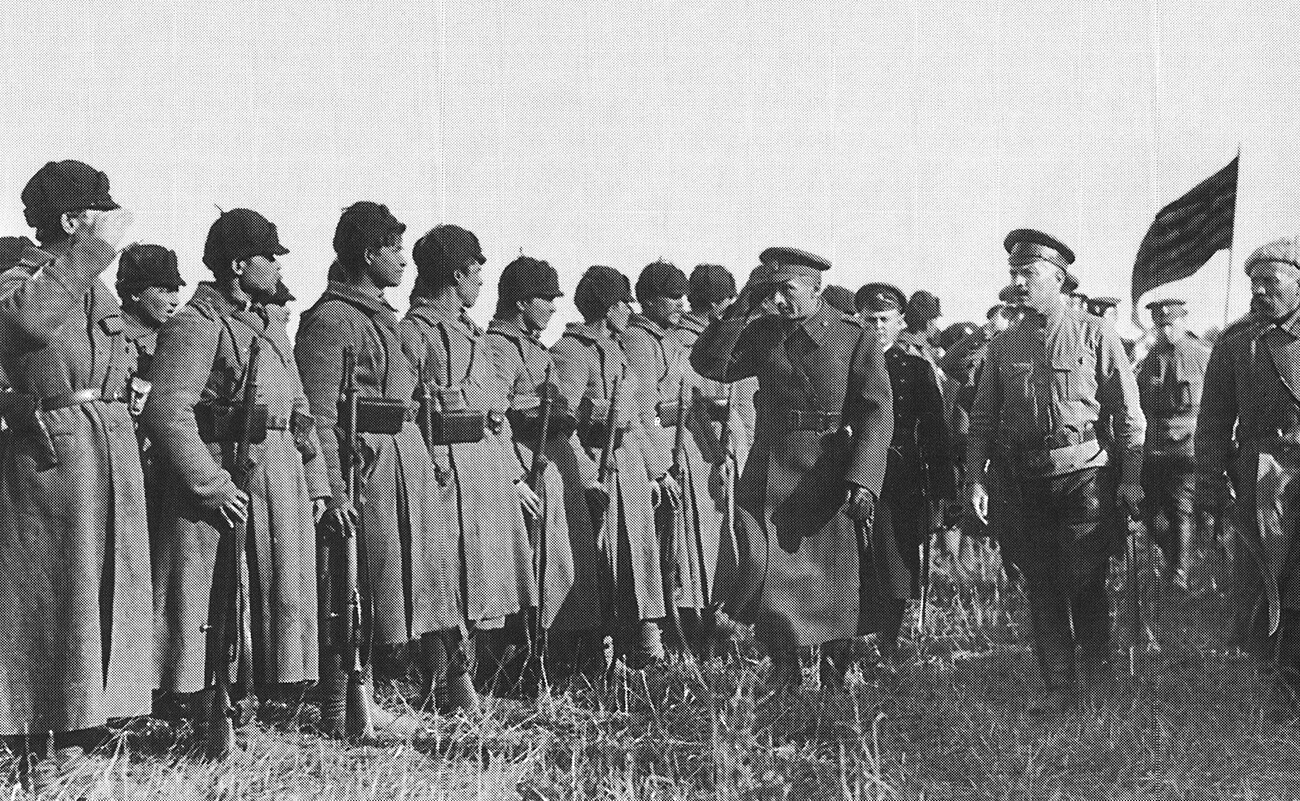 White troops.
White troops.
The Reds’ opponents in the Civil War were called the ‘Whites’ (during the French Revolution, the color white was also associated with the opponents of the revolution). The Bolsheviks claimed the Whites were fighting for the “rule of the tsar, the landlords and the capitalists”.
Far from everyone in the White camp held monarchist views, however. A rejection of Bolshevik ideas united the adherents of very different political parties and movements.
Given the specific features of the Civil War, it is difficult to talk about a clear front line. Nevertheless, certain regions of the country were held by the opposing sides almost for the entire duration of the conflict.
Thus, the Soviet authorities firmly controlled the western regions, including Moscow and Petrograd, while the Whites were entrenched on the Don in the south, in Siberia in the east and in Arkhangelsk and Murmansk in the north.
Who were the Greens?
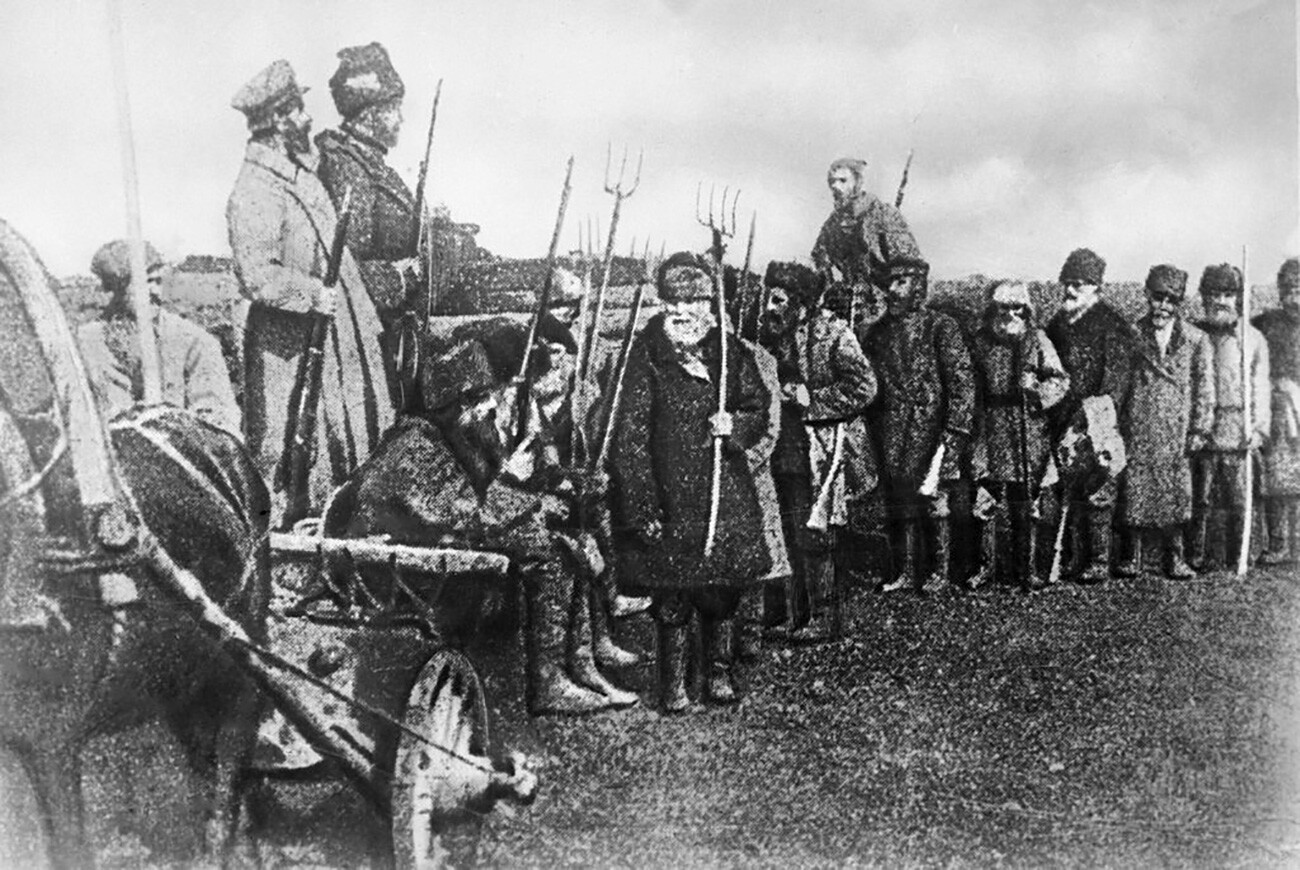 Rebellious peasants during the Tambov Uprising.
Rebellious peasants during the Tambov Uprising.
The third significant force in the Civil War were the so-called ‘Greens’. This was the label given to peasants and Cossacks and also various kinds of anarchists, who found neither the Whites nor the Reds to their liking.
The Greens refused to be mobilized into the warring sides’ armies and would take to the woods (which is how they got their name). They not infrequently managed to assemble large military formations and establish control over large areas of territory.
In Tambov Province, south of Moscow, in 1920, for instance, a large-scale insurgency led by Alexander Antonov flared up against the Bolsheviks. His United Partisan Army numbered more than 50,000 fighting men and Soviet troops only succeeded in defeating it with great difficulty.
The Greens usually fought against both the Whites and the Reds, but they were sometimes capable of reaching agreement with one or other of the warring sides. Anarchist Nestor Makhno, commander of the Revolutionary Insurgent Army of Ukraine, allied himself with the Bolsheviks several times, but eventually resumed hostilities against them, was defeated and fled the country.
Who took part in the intervention?
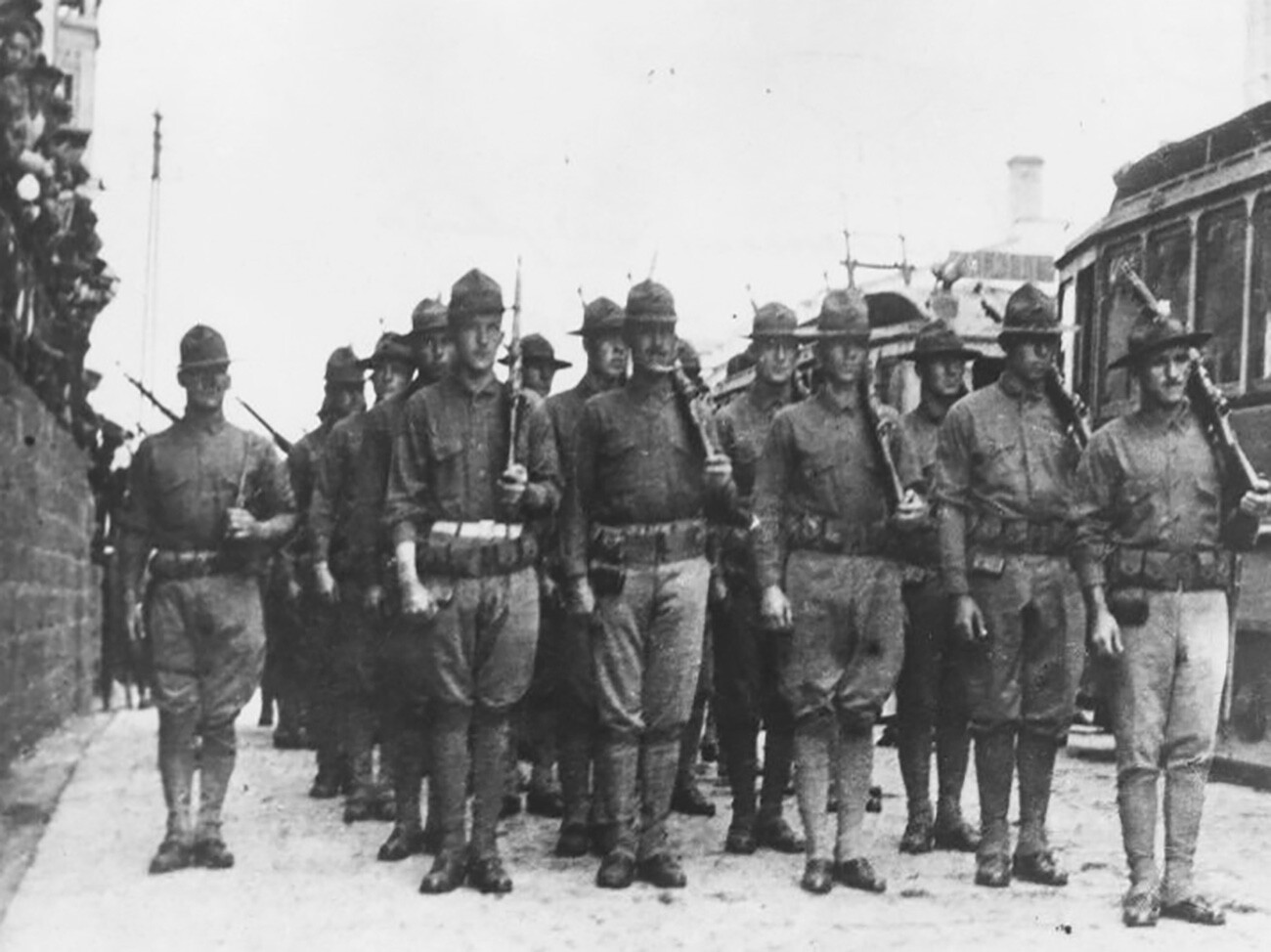 American troops in Russia.
American troops in Russia.
As a consequence of the Treaty of Brest-Litovsk, German troops occupied the whole of Ukraine and the Baltic Region (Poland was already under their control). It was only after the November Revolution of 1918 and the ousting of the kaiser that they started withdrawing from the territory of the former Russian Empire.
It was also the Treaty of Brest-Litovsk that led to the large-scale intervention of the Entente powers in Russia. The intention of the allies was to bring the Russian army back to the battlefield and they gave their support (which included arms supplies) to the Whites, who promised to wage war against the Germans to a victorious conclusion after they had seized power. Limited contingents of British, French, American, Italian, Canadian, Australian and Greek troops disembarked in ports in the south, north and east of the country.
Even after the end of World War I, the Entente was in no hurry to evacuate its troops, continuing to seek political and economic advantage for itself from the Russian chaos. The interventionists themselves kept away from areas of intensive military operations, mainly sticking to anti-partisan operations. They only started withdrawing from the country in the second half of 1919 when it had become clear that the White movement was doomed.
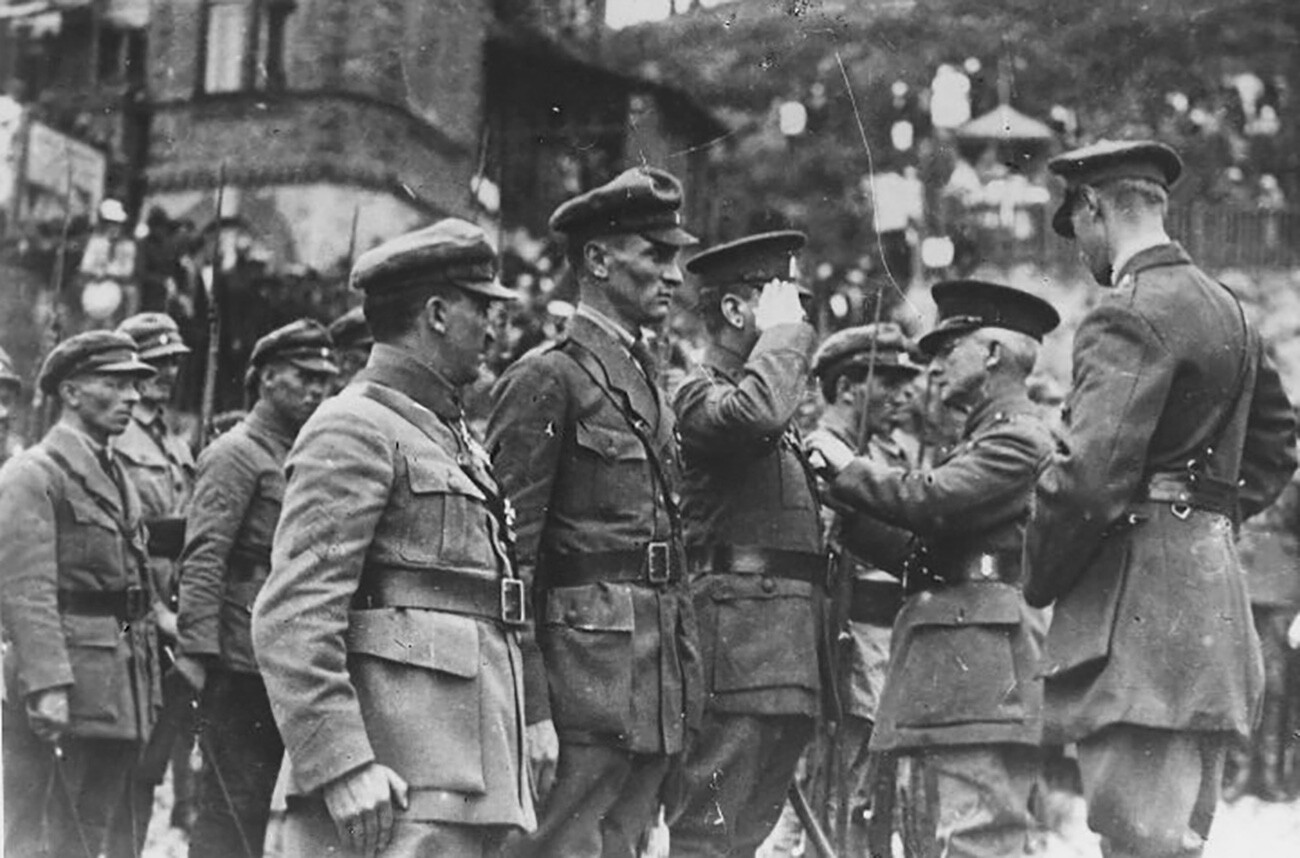 An English officer decorating officers of the Czechoslovak Corps, who fought on the side of the Whites in the Civil War.
An English officer decorating officers of the Czechoslovak Corps, who fought on the side of the Whites in the Civil War.
The Japanese made the most persistent attempts to cling on in Russia. Their plans included the subjugation of broad territories in the Far East and Siberia as far as Lake Baikal - either directly or through the establishment of a puppet state.
Lacking the means to enter into open armed conflict with the Japanese interventionists, the Bolsheviks gradually squeezed them out of their territory by diplomatic methods and by fueling the partisan movement in the rear of the enemy. They only finally managed to regain occupied northern Sakhalin in 1925.
How deadly was the Red and White terror?
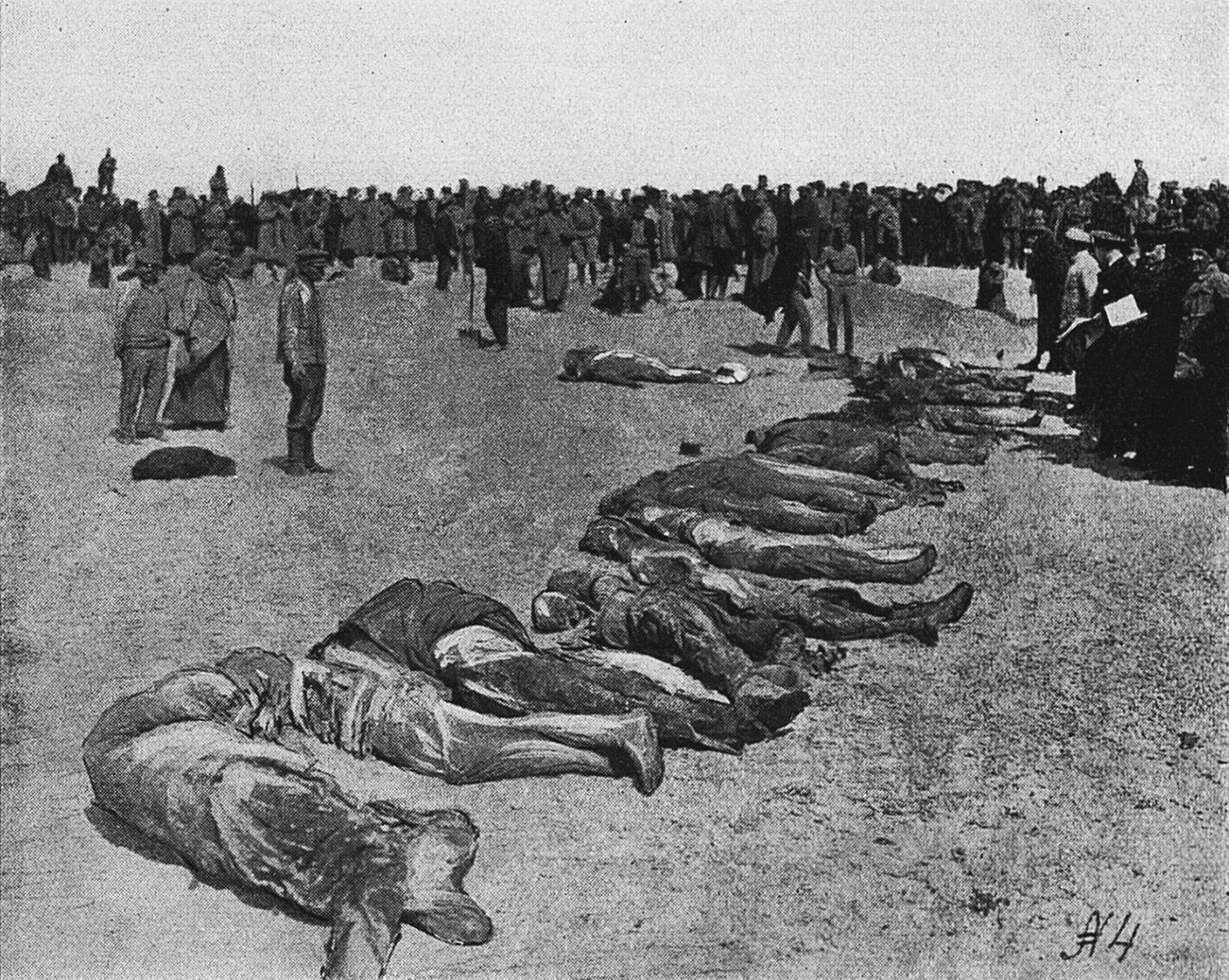 Corpses of victims of the winter 1918 Red terror in Yevpatoria, Crimea.
Corpses of victims of the winter 1918 Red terror in Yevpatoria, Crimea.
Extreme brutality is a feature of any civil war and the conflict in Russia was no exception. In Soviet Russia, violence against class enemies and counter-revolutionary elements was enshrined at state level by a September 5, 1918, decree, ‘On Red Terror’.
Up to two million people fell victim to the officially-sanctioned Red terror overall. More than half a million died in the so-called ‘White terror’. This had nothing to do with any humanity on the part of the enemies of the Bolsheviks, but derived from the fact that the regions under their control were more lightly populated.
The two sides matched each other in brutality. Thus, the repressive policy of Admiral Alexander Kolchak, the leader of the Whites in the east of the country, led to large-scale insurgencies in the rear of his armies and this was one of the principal reasons for the collapse of the regime of this self-proclaimed Supreme Leader of Russia.
The interventionist forces were also involved in the terror. They accounted for over 111,000 Russian deaths.
Why did the Bolsheviks win?
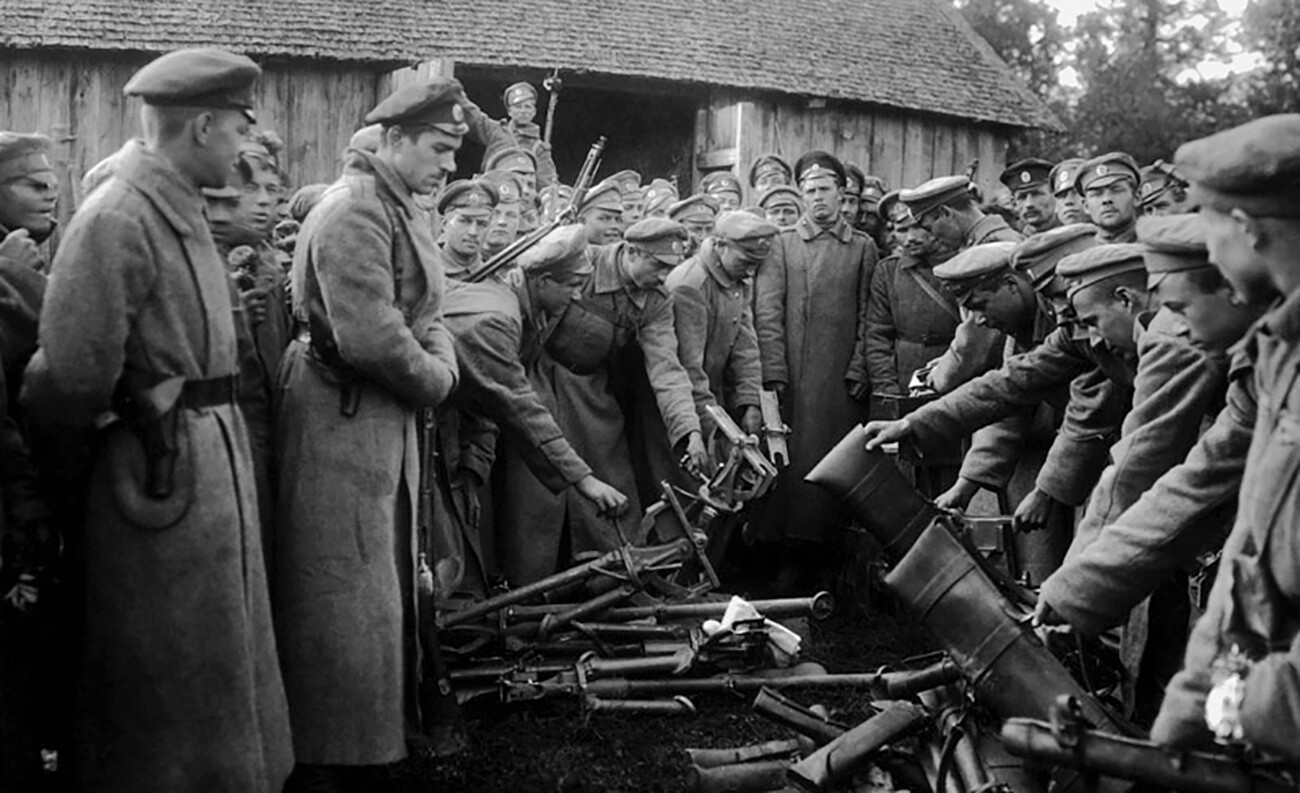 White troops laying down their arms.
White troops laying down their arms.
One of the main reasons for the defeat of the Whites in the Civil War was the fragmentation of their forces. Positioned at vast distances from one another, their generals could not effectively coordinate their operations. Furthermore, the disparate anti-Soviet military formations were sometimes in open conflict with one another.
The Whites lacked political unity or any kind of clearly-formulated ideology that they could effectively convey to the population (aside from anti-Bolshevism and the integrity of the state). The Bolsheviks, on the other hand, had fully-developed political, social and economic programs and knew how to conduct effective propaganda.
The Reds found themselves in control of the country’s densely-populated industrial regions, in which they were able to set up well-defined structures of civil and military administration, albeit through the use of sometimes brutal methods. They rapidly organized a system of training for officers and technical specialists and, in addition, they attracted to their ranks around 70 percent of former tsarist army officers.
The Bolsheviks were able to act as a single monolithic force in the Civil War. They reacted effectively to threats from any direction and instantly moved their forces to counter them. Thus, having routed Kolchak in the Urals in the Spring of 1919, by the fall, the Red Army was already able systematically and successfully to repel an advance on Moscow by Anton Denikin’s Armed Forces of South Russia and the advance of Nikolai Yudenich’s Northwestern Army on Petrograd. After a number of such heavy defeats, the White movement was effectively doomed.












